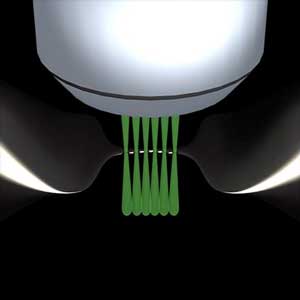| Posted: Mar 30, 2018 |
A novel test bed for non-equilibrium many-body physics
(Nanowerk News) Whether a material is, for example, a metal or an insulator depends on a range of microscopic details, including the strength of interactions between electrons, the presence of impurities and the number of dimensions through which the charge carriers can propagate. This complexity makes the prediction of electronic properties in solid-state systems highly challenging.
|
|
Understanding the behaviour of electrons in a material becomes all the more difficult when they move through a periodic potential, for example in a crystal. Then phenomena such as superfluidity, which is associated with a large conductance, can compete with interference effects that turn the material into an insulator.
|
|
Martin Lebrat, together with colleagues in the group of Tilman Esslinger at the Institute for Quantum Electronics of ETH Zurich and collaborators at the University of Geneva and the École Polytechnique Fédérale de Lausanne (EPFL) have now tackled the problem by performing experiments in a perfectly clean artificial material that they can control with great accuracy and flexibility.
|
 |
| Atoms are shaped into a wire using laser light. Their flow can be influenced by projecting a variable number of light obstacles focussed on the wire with a microscope objective. (Image: Esslinger group/ETH Zurich)
|
|
As they report in a paper published in Physical Review X ("Band and correlated insulators of cold fermions in a mesoscopic lattice"), they used laser light to create short one-dimensional lattice structures connected to two reservoirs of ultracold lithium-6 atoms.
|
|
In this setup they can measure the conductance of the wire while having exquisite control over all relevant parameters, including the length and height of the lattice and the interactions between the particles being transported through it.
|
|
In their experiments, they observed the emergence of a band-insulating phase with weak interactions. When they tuned the interactions from weakly to strongly attractive, they discovered that this insulating state persists, hinting at the presence of a so-called Luther-Emery liquid, an original phase that has been predicted in 1974 and which is distinctive of the one-dimensional character of the structure.
|
|
The experimental work is supported by simulations, and taken together these results demonstrate the simultaneous control of interactions and quantum interferences in cold-atom devices. This should be not only interesting with a view to exploring the behaviour of electrons moving through materials; the flexibility provided by the approach of Lebrat and co-workers also means that they can engineer complex structures with novel functionalities that are not available in electronic systems.
|

